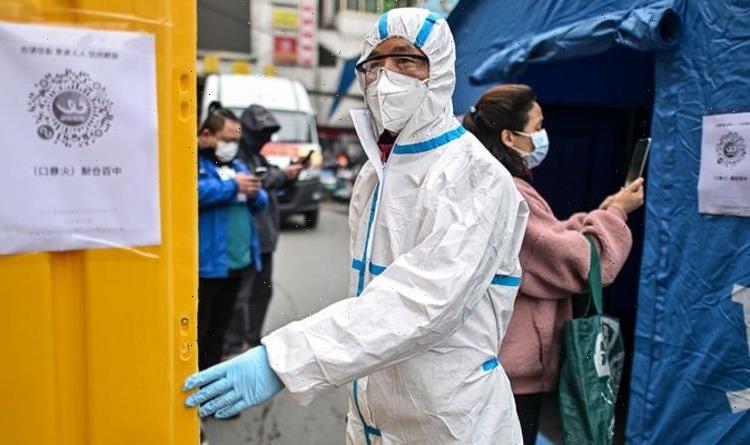Coronavirus 'anti-vaxxer' clashes with Whale over boosters
We use your sign-up to provide content in ways you’ve consented to and to improve our understanding of you. This may include adverts from us and 3rd parties based on our understanding. You can unsubscribe at any time. More info
The Huanan Seafood Market where traders sold live mammals, reptiles and fish was linked to the initial outbreak of coronavirus in 2019. According to British scientist Dr Eddie Holmes, Chinese experts had highlighted the risk of a virus “spilling over” from animals to humans five years before the start of the pandemic. Now experts have sounded the alarm over history repeating itself.
They warn that wildlife species that are traded sold and consumed in China’s wet markets are a “pandemic waiting to happen”.
A new study published on November 12, has identified 71 mammalian viruses, including 18 “high risk” that could be dangerous to humans and other animals.
According to the researchers, the most worrying was the microbes found in civets, a small nocturnal animal.
This species is believed to have carried the SARS coronavirus from bats to humans in China in 2002.


Co-author of the study, Edward Holmes, said: “This study highlights exactly why the wildlife trade and live animal markets are a pandemic accident waiting to happen.
“This paper also shows that humans regularly transmit their viruses to other animals. There’s clearly two-way virus traffic.”
Experts have also identified cross-species transmission of animal viruses with the most worrying being the transmission of a bat coronavirus to a civet.
Professor Holmes added: “A further species jump from civets into humans could easily start a major outbreak.
“The animals sold as game in live animal markets carry a wide range of viral pathogens.

“The right virus in the right animal at the right time could easily trigger a global pandemic.”
The origin of COVID-19 remains a mystery.
But recent analysis does suggest that closely-related viruses are much more widely distributed than previously believed.
The report, written by Etienne Simon-Loriere of the Pasteur Institute in Paris and Veasna Duong of the Pasteur Institute International Network in Phnom Penh, was based on two samples obtained from horseshoe bats in Cambodia.
DON’T MISS
Brexit Britain on cusp of huge win as ‘game-changing’ tech unveiled [REVEAL]
Scientists warn ‘toxic’ WW2 shipwreck risks ecological disaster [REPORT]
Biden torn apart: Energy prices ‘skyrocket’ as President ‘silent’ [INSIGHT]


Their conclusions suggest similar coronaviruses may be endemic in large areas of south-east Asia.
The report, published by Scientific journal Nature last week, highlights horseshoe bats (genus Rhinolophus) as the “main natural reservoir” of SARS-related coronaviruses, also named Sarbecoviruses2.
It states: “Indeed, a high diversity of coronavirus species have been found in Rhinolophus bats collected in several provinces of China.
“To date, the closest relatives to SARS-CoV-2 were identified from horseshoe bats sampled in the Yunnan province, southern China.”
Source: Read Full Article
